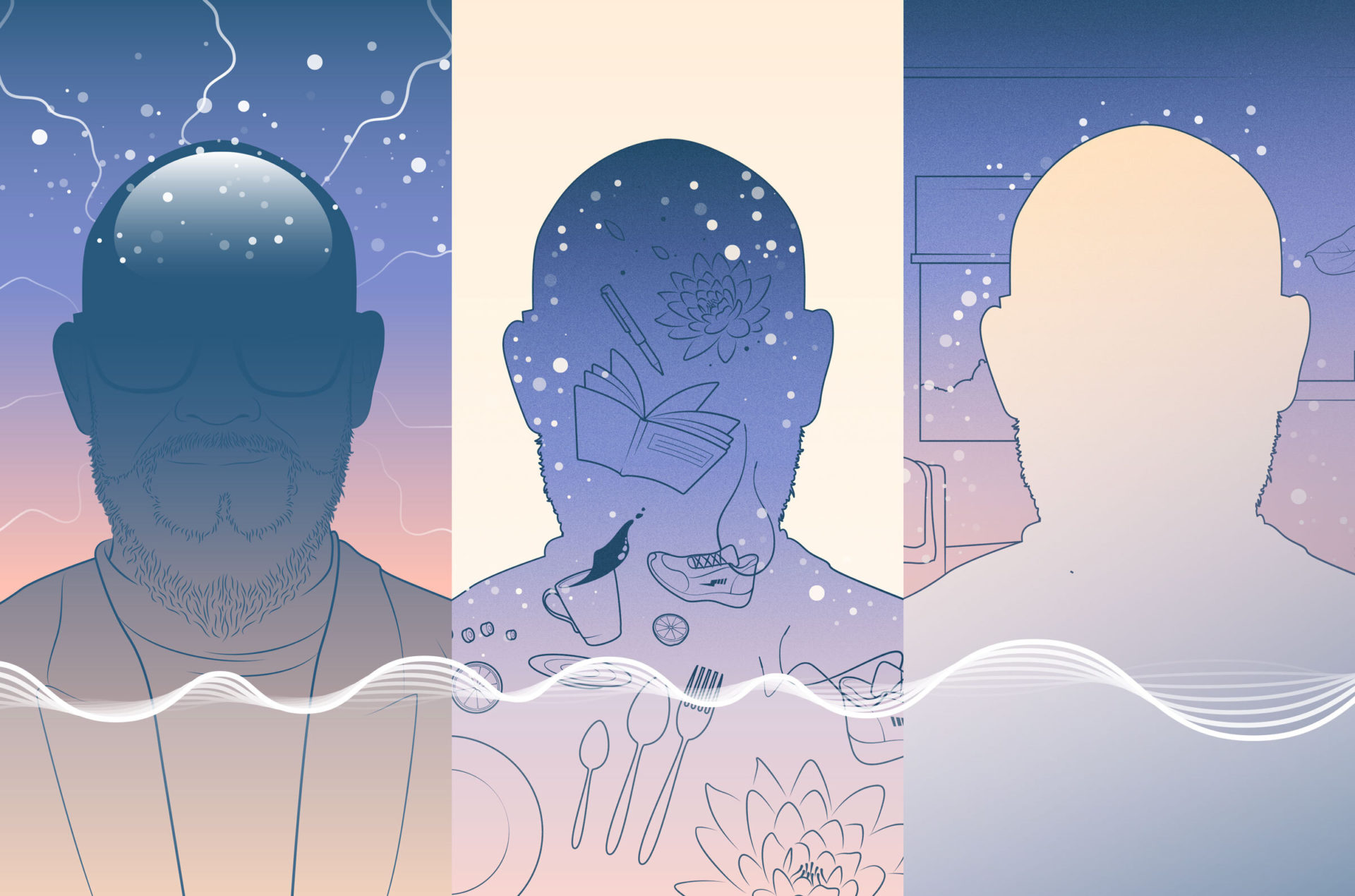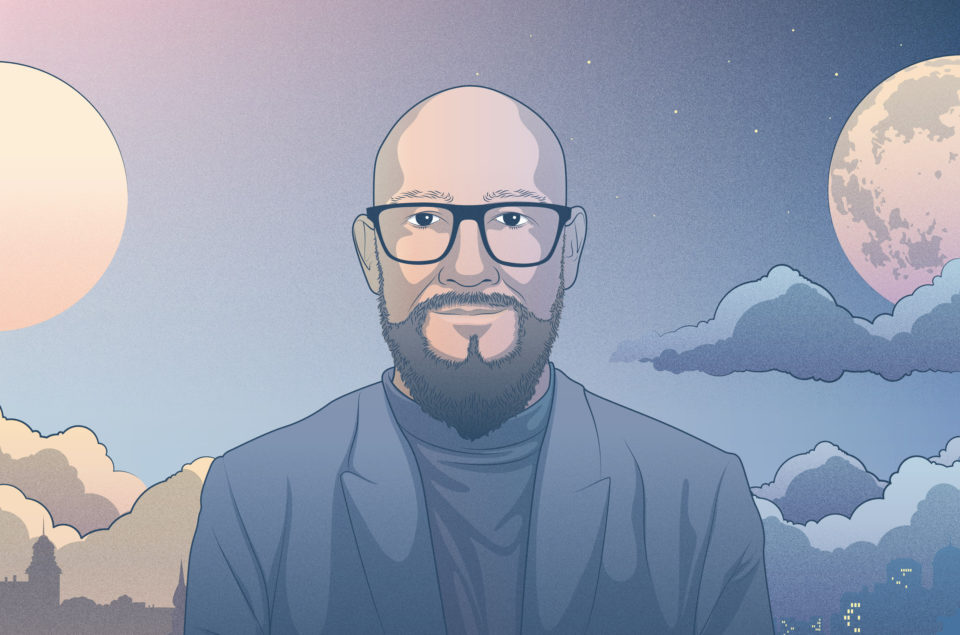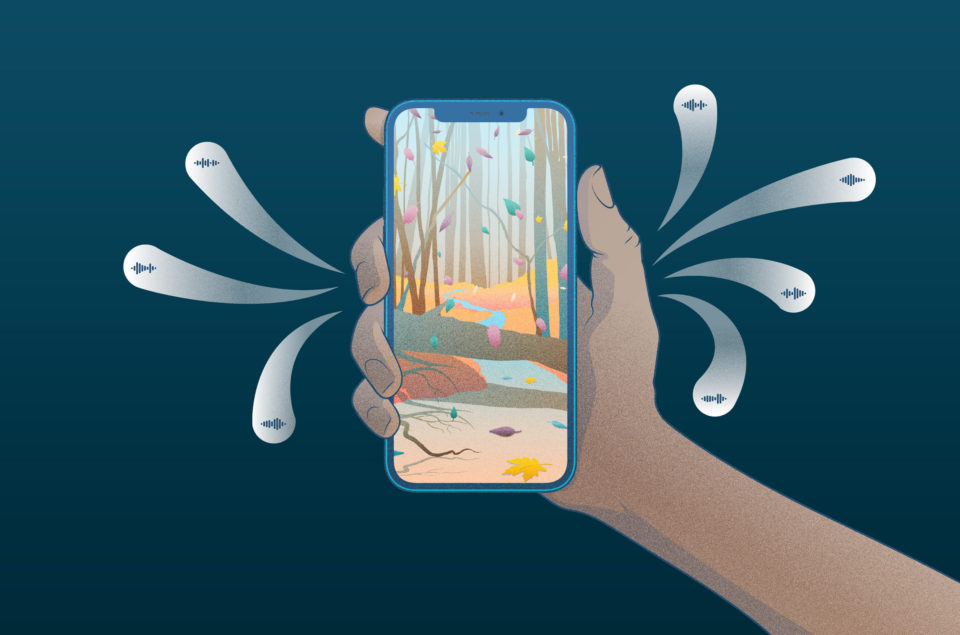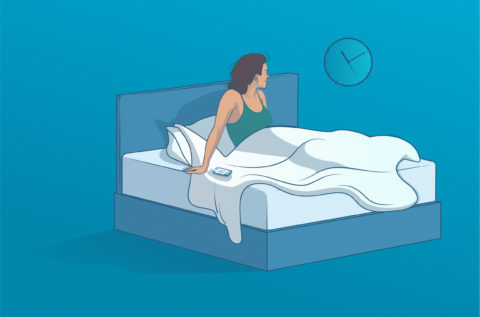Sleep Cycle recently announced an exciting collaboration with award winning music composer, Tom Middleton. Tom is also a certified sleep science coach and is an MSc student of Music, Mind and Brain. Tom applies this unique skill set when he composes sleep music. Tom has collaborated with Sleep Cycle on creating a Sleep Coaching Program that contains ‘Tom’s Story’, ‘The Mind’, ‘The Body’, ‘The Room’ and beautifully composed sleep music.
We sit down with Tom to discuss how science informs his compositions and how his music works to put us to sleep.
Q: Tom, can you walk us through your creative process when composing music specifically designed to put us to sleep?
I like to take the listener on a journey, using familiarity to instill a sense of safety, and initially use melodic elements to capture the listener’s attention. I use harmony for emotionality, implied rhythms to help them slow down, and support it all with contextual sounds usually from nature. The tracks designed exclusively for Sleep Cycle, in this case, are around 30 minutes, and typically sleep latency is around 20 minutes so the final 10 minutes is a gentle diminuendo where everything slowly fades to silence.
Ironically, the most difficult aspect of this is that as a composer/sound designer you have to be awake to make certain decisions. Imagine trying to make intentionally relaxing sleep inducing music whilst battling to stay awake and make creative decisions.
Q: How have you measured the effect sound has had on sleep?
We use various biometric clinical quality wearables that can capture everything from brainwaves, to heart and respiration rate, heart rate variability, and blood pressure to stress-recovery response.
Q: What’s your take on music/sounds as a form of CBT treatment for sleep disorders?
I think it can be considered a supportive intervention when combined with guided relaxation practices such as breathwork, visualization, body scanning and progressive muscle relaxation. I plan to further explore whether it can amplify the known benefits of CBT in the lab.
Q: You’ve mentioned employing psychoacoustic (a branch of psychology concerned with the perception of sound alongside its psychological impact) production techniques to deliberately disengage the listener by actively slowing the mind and body and eventually put them to sleep – tell us more!
Let’s take heart and respiration rate. If you’re slightly stressed or anxious these can be higher than normal resting rates. So we can use an elegant technique called rhythmic entrainment to progressively lower heart and respiration rate, which incidentally also reduces blood pressure!
Rhythmic entrainment occurs when you are aware of a pulse or beat in music, like the one you nod to or tap your foot to. If this pulse becomes slower your brain begins to synchronize with the slower pulse, thereby regulating your nervous system and inducing a deeper state of relaxation. If we use sounds that don’t repeat yet have a consistent pulse you can simultaneously slow down and switch off the active listening part of the brain.
Q: How has science shaped the way you think about composing music, which elements are necessary to prime the mind and body for sleep?
The beauty of music is you can tell a story with familiar sounds and make the listener feel safe, comfortable and relaxed, and equally inspire the imagination with new sounds if you wish to capture attention. Also, we are tuned to a background soundscape at all times at varying levels. With this in mind, if you integrate the sounds of nature in the compositions it helps to frame the story and also can transport you somewhere peaceful or magical.
Q: How do you separate the creative process for compositions that help a) onset of sleep, and b) improve the quality of sleep?
a) This function essentially needs to be the process of engagement into disengagement, from active listening into passive. b) This requires an understanding of sleep architecture, and the phases of sleep. When you know how long you need to deploy various phases they can be seamlessly mixed together so they are supportive of the sleep phase. What you don’t want to do is unintentionally awaken someone in the middle of deep sleep!
Q: You’ve carried out empirical research on the impact of sleep on our wellbeing – can you expand on this?
Actually it’s specifically in relation to functional soundscapes and accompanying breathwork which we have data on showing how effective it is in relation to heart rate, respiration rate and heart rate variability.
Q: As a sound architect you’ve implemented systems in which public spaces, such as Sound Spas make guests comfortable. Can you tell us more about this process?
Using discrete, invisible (hidden) or directional speakers we design evolving organic, biophilic soundscapes for spaces that support the time of day and season, and appropriate mood and energy levels as a counter to the inevitable challenges of daily stress, anxiety and exterior unhealthy noise pollution.
Q: Sound design in the hospitality industry/air travel/hotels etc – can you share your vision of where you think it’s going?
We’re already exploring ways to integrate multiple sensory tools to support wellbeing, sleep and focus. Each sensory layer can amplify the effect using principles of neuroscience and behavioral psychology. But I’m working with technology platforms that will integrate many senses, so light, visuals, scent, temperature, air quality and soundscapes will be adaptive and smart so eventually learning to anticipate customer/users’ wellbeing needs.
Q: What’s your take on sleep pods/nap rooms in office spaces?
I totally approve and would insist! I hope we’re getting nearer the day when moments to rest the mind and body are actively encouraged as we can see the measurable productivity and performance benefits. With naps, NASA has recommended that around 26 minutes is optimal and would be the safest. The danger is beyond that you fall into the other sleep phases, so you could nap for 60 minutes and be woken feeling groggy with sleep inertia, as the body needs time to reactivate itself. 90 minutes is approximately one complete sleep cycle and you can awaken feeling at a light level of sleep feeling refreshed.
Q: Music for pain management? Tell us more.
Audio-analgesics are a new application of functional sound and music. Using a technique of pain perception modulation via both distraction (from the pain), spatial sound to focus the attention and binaural beats to entrain brainwaves into slower states of relaxation.
—
With Sleep Cycle’s Sleep Aid library of meditations and music, soundscapes and sleep stories, our content now also includes the new category, ‘Sleep Coaching Program’ including Tom Middleton’s soundscapes and sleep compositions, exclusively produced for Sleep Cycle to help put our users to sleep.









